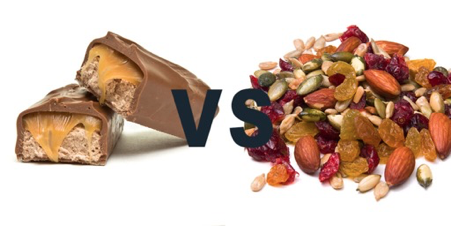
Snack Attack - Candy Bar Vs Trail Mix
We are all too often faced with a situation where we are hungry, but not hungry enough for a meal.
It’s snack time.
So, consider this scenario.
You are just about to leave work or school for the long commute home. Dinner is a good 2 hours away but you need something NOW. So you pop into 7-11 and try to find something that will satisfy that grumbly tummy.
It’s snack time.
So, consider this scenario.
You are just about to leave work or school for the long commute home. Dinner is a good 2 hours away but you need something NOW. So you pop into 7-11 and try to find something that will satisfy that grumbly tummy.
You spy two options: A bag of Trail Mix and a Chocolate Bar. Hmmm.
You really WANT the Chocolate Bar with all it’s creamy chocolate and gooey caramel. But, instead you tell yourself that you should get something ‘healthy’ and you opt for the bag of trail mix. By the time you get home, you have completely demolished the entire bag feeling smug that you made the right choice. But did you?
You really WANT the Chocolate Bar with all it’s creamy chocolate and gooey caramel. But, instead you tell yourself that you should get something ‘healthy’ and you opt for the bag of trail mix. By the time you get home, you have completely demolished the entire bag feeling smug that you made the right choice. But did you?

I know what you are thinking.
No contest. Chocolate Bar - ‘bad’, Trail mix - ‘good’.
Well, it’s not that black and white.
There are many things to consider, the first should be the MACRONUTRIENT profile.
You will find this information on any food label (if a packaged food does not have a food label, don’t eat it!). This should list the total Energy (kCal - Calories) and break down the amount of Fat, Protein and Carbohydrates(CHO).
It should also list the amount of Sugar, Sodium and a serving size.
No contest. Chocolate Bar - ‘bad’, Trail mix - ‘good’.
Well, it’s not that black and white.
There are many things to consider, the first should be the MACRONUTRIENT profile.
You will find this information on any food label (if a packaged food does not have a food label, don’t eat it!). This should list the total Energy (kCal - Calories) and break down the amount of Fat, Protein and Carbohydrates(CHO).
It should also list the amount of Sugar, Sodium and a serving size.
So let's compare the two. In the interests of simplicity, we will use the serving size of 1 Chocolate Bar (53gm). Because of licensing and trademarks, I shall not mention any brand names, but suffice to say, the items I used did look like the ones above for this comparison.
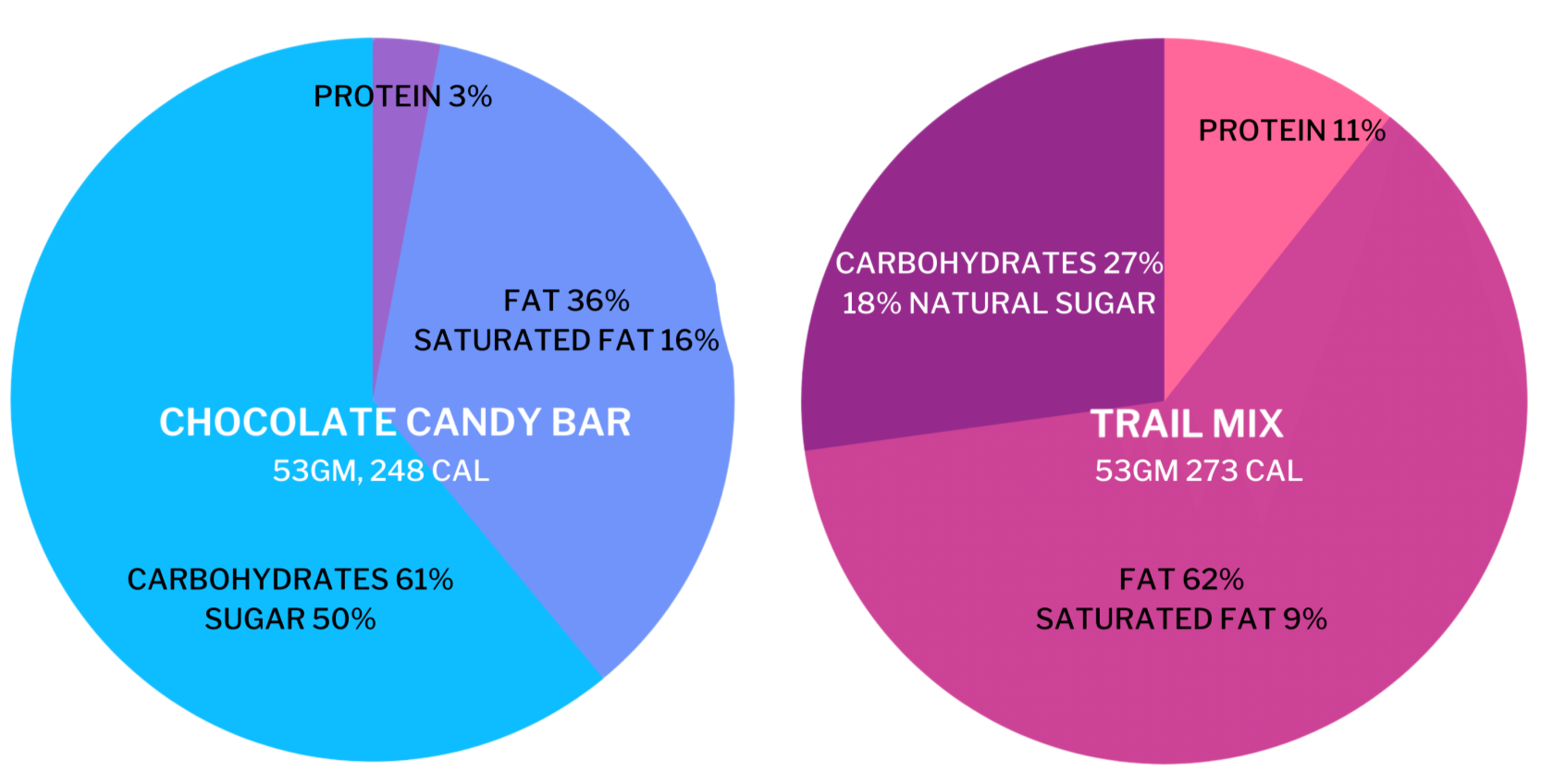
If we consider only ENERGY, weight-for-weight, the chocolate bar and the trail mix are pretty even. But dissect the MACRONUTRIENT profile and you see a different story. The trail mix has 4 TIMES more PROTEIN than the Chocolate Bar.
Protein is what our body cells are made of.(1) It is used for growth and repair of body tissues, for hormones and for all enzymatic reactions (making things happen) in the body.
Low protein diets can lead to muscle wastage and weakness.(2)
Low protein diets can lead to muscle wastage and weakness.(2)
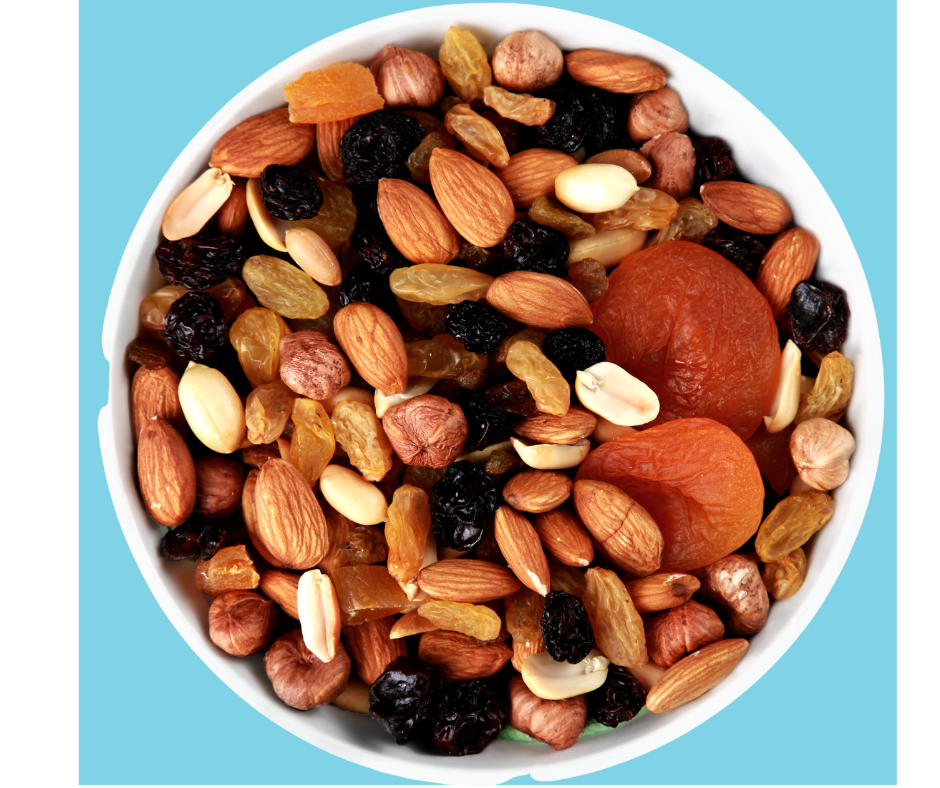 The Trail Mix, on the other hand, has TWICE as much FAT as the Choclolate Bar.
The Trail Mix, on the other hand, has TWICE as much FAT as the Choclolate Bar.This is because it contains nuts.
Nuts are high in protein and also high in Omega-3 Fatty Acids.
Omega-3s play an essential role in brain function and are thought to protect your heart from disease.(3)
(For more info on Omega 3s, click HERE).
But - fat is fat.
So nuts should be eaten sparingly if you are watching your weight.
Lets look at Carbohydrates (CHO).
Your body LOVES Carbohydrates.
In fact, Carbohydrates are its fuel of choice. Eventually everything we eat is converted to GLUCOSE (which is a CHO and a simple sugar).(4)
In this case, the main Carbohydrate in the Chocolate Bar is already refined SUGAR (no conversion needed).
Any extra sugar your body gets that is not used in energy production, is stored as FAT.
So, in a nutshell, the more refined SUGAR you eat, the more FAT you store.
Plus excess sugar in your bloodstream turns on a cascade of chemical reactions resulting in, ironically, LOW blood sugar.(5) So you get a quick high when you eat the Chocolate Bar, but 60 minutes later you feel lethargic, tired and HUNGRY!
Your body LOVES Carbohydrates.
In fact, Carbohydrates are its fuel of choice. Eventually everything we eat is converted to GLUCOSE (which is a CHO and a simple sugar).(4)
In this case, the main Carbohydrate in the Chocolate Bar is already refined SUGAR (no conversion needed).
Any extra sugar your body gets that is not used in energy production, is stored as FAT.
So, in a nutshell, the more refined SUGAR you eat, the more FAT you store.
Plus excess sugar in your bloodstream turns on a cascade of chemical reactions resulting in, ironically, LOW blood sugar.(5) So you get a quick high when you eat the Chocolate Bar, but 60 minutes later you feel lethargic, tired and HUNGRY!
The Carbohydrates in the Trail Mix however, come from FRUCTOSE, a type of sugar found in fruit (in this case, dried fruit). This sugar is absorbed relatively slowly in the intestines and is converted by the liver to glucose so it doesn’t result in the high/low blood sugar cascade that happens when you eat refined sugar.(6)
Confusing? Have you lost your appetite? But wait, there’s more....
Now have a look at the INGREDIENTS.
The Trail Mix has seeds, nuts and dried fruit (if it contains salt, palm oil or added sugar or anything you can’t pronounce - DON’T BUY IT!).
The Chocolate Bar has a tonne of stuff: cocoa butter, soy lecithin, palm oil, barley malt extract, salt.
This is where we start to look at the MICRONUTRIENTS.(7) These are the vitamins and minerals and the phytonutrients: all the tiny little molecules that keep our body healthy and happy.
It’s no surprise that the Trail Mix has an abundance of these, and the Chocolate Bar is pretty devoid, comparatively.
The Trail Mix has seeds, nuts and dried fruit (if it contains salt, palm oil or added sugar or anything you can’t pronounce - DON’T BUY IT!).
The Chocolate Bar has a tonne of stuff: cocoa butter, soy lecithin, palm oil, barley malt extract, salt.
This is where we start to look at the MICRONUTRIENTS.(7) These are the vitamins and minerals and the phytonutrients: all the tiny little molecules that keep our body healthy and happy.
It’s no surprise that the Trail Mix has an abundance of these, and the Chocolate Bar is pretty devoid, comparatively.
So the Trail Mix is high in fat (bad), but its the good fat (good); and the Chocolate Bar is high in sugar (the bad sugar) and high in fat (the bad fat). Which do you choose?
Consider this: If you buy a Chocolate Bar, how many Chocolate Bars do you eat? (NOT a trick question).
You eat 1 Chocoloate Bar. That is about 250 Calories.
BUT, if you buy a packet of Trail Mix (that weighs 250gm), how much Trail Mix do you eat?
If you eat about ⅕ of the packet (53gm), you are better off choosing the Trail Mix for all it’s natural goodness, high protein, fibre and lovely micronutrients. But who gets a small bag of trail mix and weighs out 53gm? Not me.
You eat 1 Chocoloate Bar. That is about 250 Calories.
BUT, if you buy a packet of Trail Mix (that weighs 250gm), how much Trail Mix do you eat?
If you eat about ⅕ of the packet (53gm), you are better off choosing the Trail Mix for all it’s natural goodness, high protein, fibre and lovely micronutrients. But who gets a small bag of trail mix and weighs out 53gm? Not me.
If you think you have no willpower and will scoff the entire bag, then you had better be eating salad for the rest of the day because that one tiny bag of Trail Mix has provided your fat intake, plus some, for an ENTIRE day.
For me, the energy in one bag is about 75% of my total daily calorie allowance.
For me, the energy in one bag is about 75% of my total daily calorie allowance.
So, whilst Trail Mix clearly wins out on the health stakes, the VOLUME of trail mix is most likely the issue.
50 gm of trail mix will fit in your closed palm.
It is not much at all.
The best bet is to buy the trail mix earlier and weigh out 50 gm lots and keep a serving size in your backpack or handbag for hunger emergencies.
If that’s too hard, you are better off buying a banana.
Bananas a full of lovely energy boosting carbohydrates and fibre to keep you full till dinner time.
50 gm of trail mix will fit in your closed palm.
It is not much at all.
The best bet is to buy the trail mix earlier and weigh out 50 gm lots and keep a serving size in your backpack or handbag for hunger emergencies.
If that’s too hard, you are better off buying a banana.
Bananas a full of lovely energy boosting carbohydrates and fibre to keep you full till dinner time.
If you liked this article and want to talk to me about your health, LET'S CONNECT.
References:
1. Sherwood, L. (2010). Human Physiology. From Cells to Systems. 7ed. Brooks/Cole. Belmont, Ca. p.A14.
2. Burke, L. & Deakin, V. (2011). Clinical Sports Nutrition. 4ed. McGraw Hill. North Ryde, NSW. p.75.
3. National Institutes of Health. Office of Dietary Supplements. (2018) Omega-3 Fatty Acids. Accessed via this website.
4. McArdle, W.D., Katch, F.I., and Katch, V.L. (2010). Exercise Physiology. Nutrition, Energy and Human Performance. 7ed. Lippincott Williams & Wilkins. Philadelphia, USA. pp. 135-161.
5. Sherwood, L. (2010). Human Physiology. From Cells to Systems. 7ed. Brooks/Cole. Belmont, Ca. p.715.
6. Burke, L. & Deakin, V. (2011). Clinical Sports Nutrition. 4ed. McGraw Hill. North Ryde, NSW. p.332.
7. Australian Government National Health and Medical Research Council. (2017) Nutrients Reviewed. Accessed via this website.
8. Fogelholm, M. (2011) Vitamin, mineral and anti-oxidant needs of athletes. In Burke, L. & Deakin, V. (2011).Clinical Sports Nutrition. 4ed. McGraw Hill. North Ryde, NSW. pp.268 - 286.


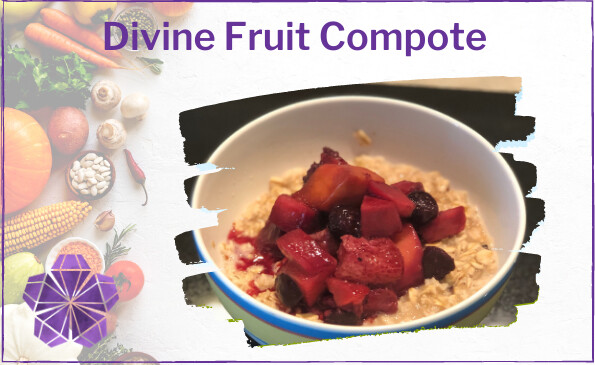



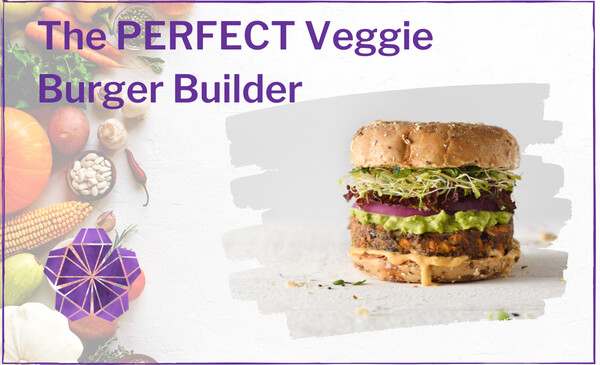

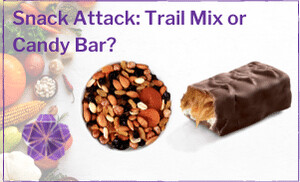

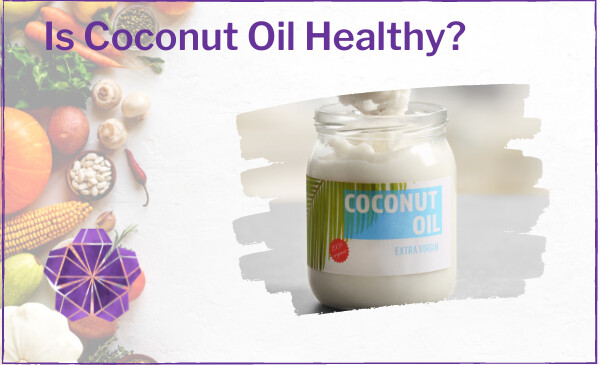






0 Comments